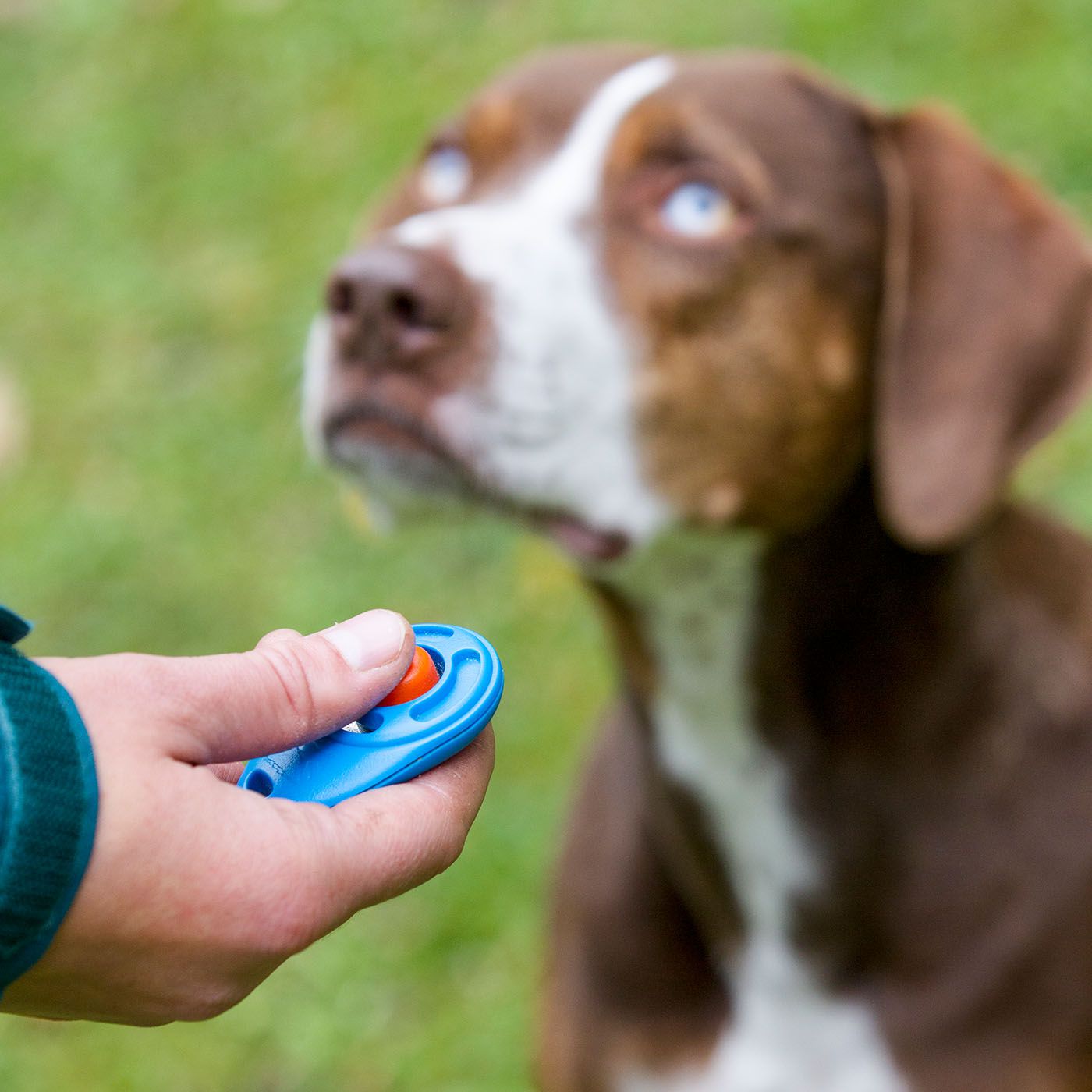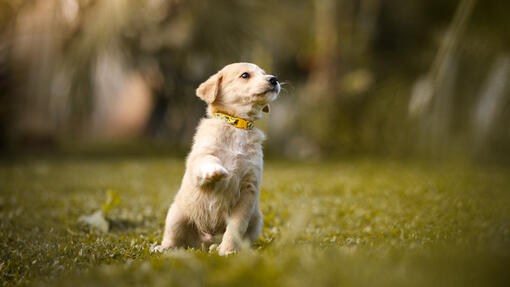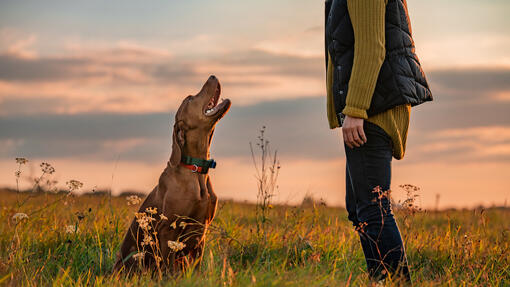
Dogs are more likely to learn and repeat behaviours that get them some sort of reward — be it praise, treats, or simply your attention. Known as positive reinforcement, if you reward your dog when training them to sit, for example, they will do the trick in order to get what they want. However, training — even rewards-based training — tends to take some time and effort. To make it easier and more efficient, you could consider using dog clicker training. This is a great way of improving your communication when working on expanding your puppy’s repertoire of tricks.
What is dog clicker training?
Dog clicker training is a popular technique that incorporates a small device known as a clicker which, as the name indicates, makes a clicking sound when pressed. The clicker noise is a positive reinforcement indicator that your pup will learn to associate it with them performing certain actions and with their good behaviour, alongside rewards, whenever they hear it.
When should you start clicker training?

Dog clicker training can start as early as puppyhood. In fact, introducing your puppy to clickers as soon as you get them is strongly recommended. Once they learn to associate good behaviour with the clicking sound, it will be much easier for you to communicate with them and teach them new tricks or behaviours.
Adult dogs, on the other hand, might take longer to get used to this approach, but it’s not impossible either. So, if your furry friend is a bit older, don’t worry, they are still perfectly capable of learning too.
Why use dog clicker training?
During dog clicker training, your puppy learns that they are rewarded for good behaviour as the clicking sound signals that a reward is coming, such as a treat. This ensures that they stay motivated to learn new tricks quicker and easier. As opposed to only using treats, dog clicker training will enable your dog to understand what is required of them through audible reinforcement as well as through treats.
Clicker training your puppy strengthens your communication and trust. With consistent training, they will learn how to follow your directions and pinpoint the exact behaviour that is expected of them. With a clicker, you can also do as many repetitions as needed without losing their attention or motivation.
Steps for clicker training your dog
Check out this step-by-step technique for introducing your pooch to dog clicker training.
1. Introduce your dog to the clicker
First, you’ll need to make sure your dog knows what the clicker is for. So, with a few treats on hand, click the clicker once and give your dog the treat immediately. Do this a few times and observe their behaviour to make sure they understand. It’s also a good idea to be mindful of the way you hold the clicker when using it so that it’s not intimidating to your dog. Don’t hold it right in front of them like a remote control but rather, keep it in your hand to the side of your body, in a natural way.
After just a few repetitions your pooch will learn to associate the treat with the click and will be expecting the treat every time they hear the sound.
2. Choose a quiet location
The location for dog clicker training is very important because your pooch should have no distractions when they’re training. If there’s constant noise and people around, they might find it difficult to focus. Also, in order to avoid using a lot of treats, you can start the session before their dinner and use some of their food during the training.
3. Use the clicker for basic commands

If your dog is already following basic commands like ‘sit’ or ‘down’, you can start by practicing them while using the clicker. If not, start teaching them these simple tricks first. Give the command, wait for them to respond and once they do the trick, click the clicker and follow up with a treat no more than 3 seconds after the clicking sound. Timing is very important so that they can associate the click with the reward.
4. Start teaching them more advanced tricks
Now that they’ve mastered the simple tricks, it’s time for something more advanced. To teach them how to roll over, use a treat as a lure and while holding it close to their nose, start moving it towards their shoulder until they do a full roll. Click the clicker as soon as they do the trick and then given them the treat. After a few repetitions, you can also add a verbal cue word that they can respond to when they hear it.
5. Be consistent with practice
Practice makes perfect, so the key to a successful dog clicker training is consistency. Regular and consistent training will help your dog better understand the cause-and-effect of the clicks and will lead to faster results.
6. Use lots of praise
Dogs love encouragement and following up on a successful performance with praise will do wonders in building up their confidence. So don’t forget to use a few “great job!” or “good dog!” phrases along the way.
7. Phase out the clicker and treats
After your dog has nailed down the tricks, you can slowly eliminate the clicker and the treats and continue practicing with verbal cues only. You should still continue praising them for their efforts though.
8. Keep the sessions short
Lastly, remember to keep the training sessions short, around 10–15 minutes per session should be enough. You can, however, do a few sessions per day but be careful not to overtire them. If you feel like they’re losing interest, it’s best to call it a day.
Teaching your pup new tricks should be fun and easy and with dog clicker training you’ll soon have a very skilled furry best friend that you can show off to friends and family next time they come over.
